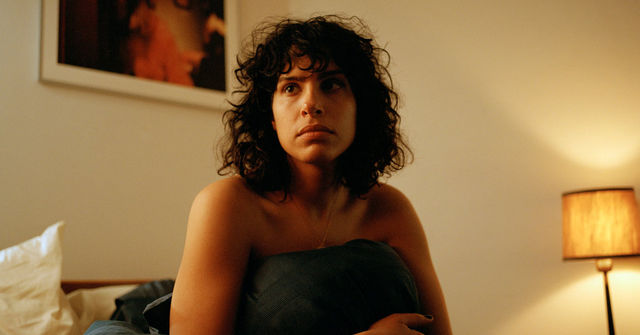Bisexual. Sometimes it can feel like a “bad” word, both in queer culture and in heteronormative society. You might think that bisexuals would feel at home both worlds, however, many bisexual folks feel excluded or erased from both straight and queer communities. Writer/director/actor Desiree Akhavan’s own experiences led her to feel the need to tackle “the bisexual” dilemma in her new Hulu series, released in October 2018.
In a Q&A during the New York LGBTQ Film Fest, Akhavan explained that when promoting her first film, 2014’s Appropriate Behavior, she was often referred to as “the bisexual.” “The bisexual writer,” “the bisexual Lena Dunham,” “the bisexual playwright.” After having this phrase become so closely intertwined with her artistic identity, Akhavan realized that she wanted to spend more time unpacking the term and exploring how those who identify as bisexual relate to both the straight and queer worlds.
The Bisexual doesn’t follow Akhavan’s personal path, though she writes, directs, and stars in it. Instead, Akhavan plays a fictional character named Leila, who at the point the show begins identifies as a “gold star” lesbian, meaning she has never slept with a man. (Akhavan herself has been out as bisexual for a number of years.)
As Lelia ends her long-term relationship with her girlfriend, Sadie (Maxine Peake), the audience empathizes—she’s given a whole decade to the relationship. When Leila re-enters the dating world, she has to face what it means for her to come out as bisexual to both her straight and gay friends.
Akhavan captures the uneasiness of finding yourself, and the experience of disenfranchisement after coming out. Sometimes, the more we become ourselves, the more we lose those around us. As Leila begins to explore relationships with straight men, her close lesbian friends begin to push her away.
In a poignant conversation during the series, Leila discusses sexuality with a young Argentinian woman. The topic is the queerness in younger people vs. older people. When the young woman doesn’t understand Leila’s discomfort, Leila states, “Everyone under 25 is queer.” With the massive changes in outlook in our society, and the growth of the queer community through the internet and grassroots movements, this sentiment isn’t true, but it’s closer to true than it has ever been before.
A similar conflict is played out between Leila and Sadie. The two are a decade apart in age, and their experiences of coming out look quite different. It becomes clear, during their arguments about oppression and sexuality, how much pain Sadie had to endure to be seen by society. These different experiences add a challenging dynamic to their relationship; when Leila comes out as bisexual, she feels pushed away by Sadie.
Although the show begins with an edge of sinister comedy, the first two episodes have a note of hilarity that does not shine through in the later episodes. As the show starts to turn more intimate and personal, the comic aspects of the initial episodes begin to fade.
In many cases, Leila’s path seems self-sabotaging ruthless. Her decisions seem to be driven by the show’s aim to fully capture the breadth of the bisexual experience, rather than by character development. Perhaps Akhavan was trying to work with too much, trying to tackle all the stigmas and tropes that bisexuals face. There are very few bisexual lead characters on TV, and that means there’s a lot to cover in the arenas of sex, love, oppression, inner turmoil, and communal grief. While vast in its scope, the show misses a few steps when it comes to gender, sexual fluidity, and a new openness about sexuality among young people. The show seems to make a blanket statement that gays and straights just don’t get along, and that bisexual folks find themselves in the middle of a world that has no space for them.
Bisexual representation in media is incredibly important, and the Bisexual lets current generations feel heard and seen while creating some much-needed representation for the next generation. However, in the breadth of the Bisexual’s scope, we lose something; Leila’s experience seems more like a way to respond to narratives about bisexuality than a realistic characterization. It’s important that those working to bring LGBTQ+ representation into the mainstream create an open dialogue, rather than a singular and narrow depiction of what it’s like to be bisexual.
Top photo: The Bisexual/Hulu
More from BUST
5 Common Myths About Bisexuality & Pansexuality Debunked!
Kyrsten Sinema Is The First Out Bisexual Senator And Arizona’s First Female Senator
7 Awesome Fictional Bisexual Ladies


